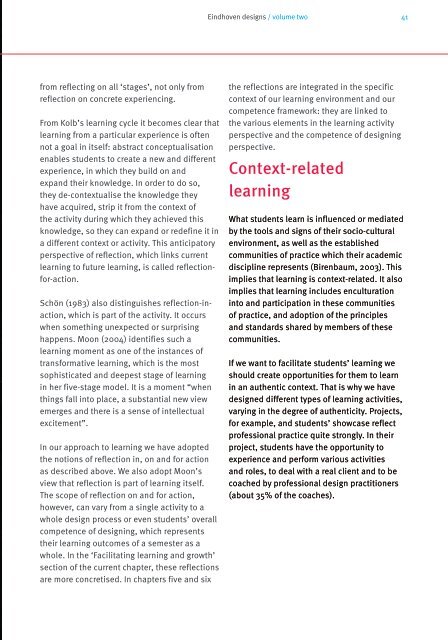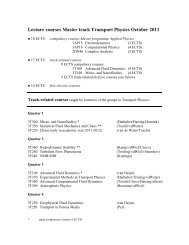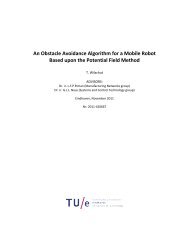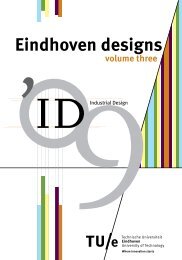Education guide 'Eindhoven designs' - Technische Universiteit ...
Education guide 'Eindhoven designs' - Technische Universiteit ...
Education guide 'Eindhoven designs' - Technische Universiteit ...
You also want an ePaper? Increase the reach of your titles
YUMPU automatically turns print PDFs into web optimized ePapers that Google loves.
Eindhoven designs / volume two 41<br />
from reflecting on all ‘stages’, not only from<br />
reflection on concrete experiencing.<br />
From Kolb’s learning cycle it becomes clear that<br />
learning from a particular experience is often<br />
not a goal in itself: abstract conceptualisation<br />
enables students to create a new and different<br />
experience, in which they build on and<br />
expand their knowledge. In order to do so,<br />
they de-contextualise the knowledge they<br />
have acquired, strip it from the context of<br />
the activity during which they achieved this<br />
knowledge, so they can expand or redefine it in<br />
a different context or activity. This anticipatory<br />
perspective of reflection, which links current<br />
learning to future learning, is called reflectionfor-action.<br />
Schön (1983) also distinguishes reflection-inaction,<br />
which is part of the activity. It occurs<br />
when something unexpected or surprising<br />
happens. Moon (2004) identifies such a<br />
learning moment as one of the instances of<br />
transformative learning, which is the most<br />
sophisticated and deepest stage of learning<br />
in her five-stage model. It is a moment “when<br />
things fall into place, a substantial new view<br />
emerges and there is a sense of intellectual<br />
excitement”.<br />
In our approach to learning we have adopted<br />
the notions of reflection in, on and for action<br />
as described above. We also adopt Moon’s<br />
view that reflection is part of learning itself.<br />
The scope of reflection on and for action,<br />
however, can vary from a single activity to a<br />
whole design process or even students’ overall<br />
competence of designing, which represents<br />
their learning outcomes of a semester as a<br />
whole. In the ‘Facilitating learning and growth’<br />
section of the current chapter, these reflections<br />
are more concretised. In chapters five and six<br />
the reflections are integrated in the specific<br />
context of our learning environment and our<br />
competence framework: they are linked to<br />
the various elements in the learning activity<br />
perspective and the competence of designing<br />
perspective.<br />
Context-related<br />
learning<br />
What students learn is influenced or mediated<br />
by the tools and signs of their socio-cultural<br />
environment, as well as the established<br />
communities of practice which their academic<br />
discipline represents (Birenbaum, 2003). This<br />
implies that learning is context-related. It also<br />
implies that learning includes enculturation<br />
into and participation in these communities<br />
of practice, and adoption of the principles<br />
and standards shared by members of these<br />
communities.<br />
If we want to facilitate students’ learning we<br />
should create opportunities for them to learn<br />
in an authentic context. That is why we have<br />
designed different types of learning activities,<br />
varying in the degree of authenticity. Projects,<br />
for example, and students’ showcase reflect<br />
professional practice quite strongly. In their<br />
project, students have the opportunity to<br />
experience and perform various activities<br />
and roles, to deal with a real client and to be<br />
coached by professional design practitioners<br />
(about 35% of the coaches).

















